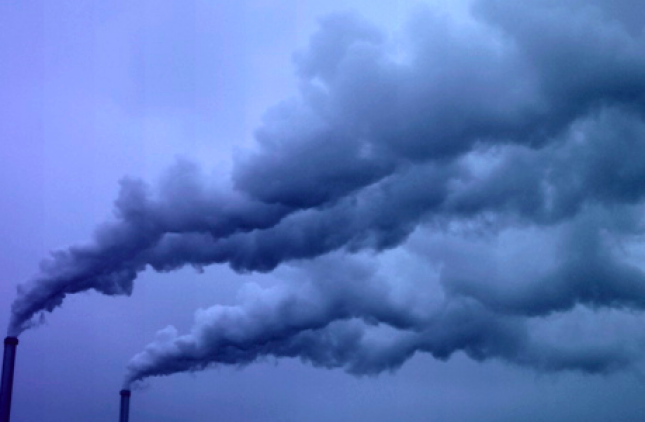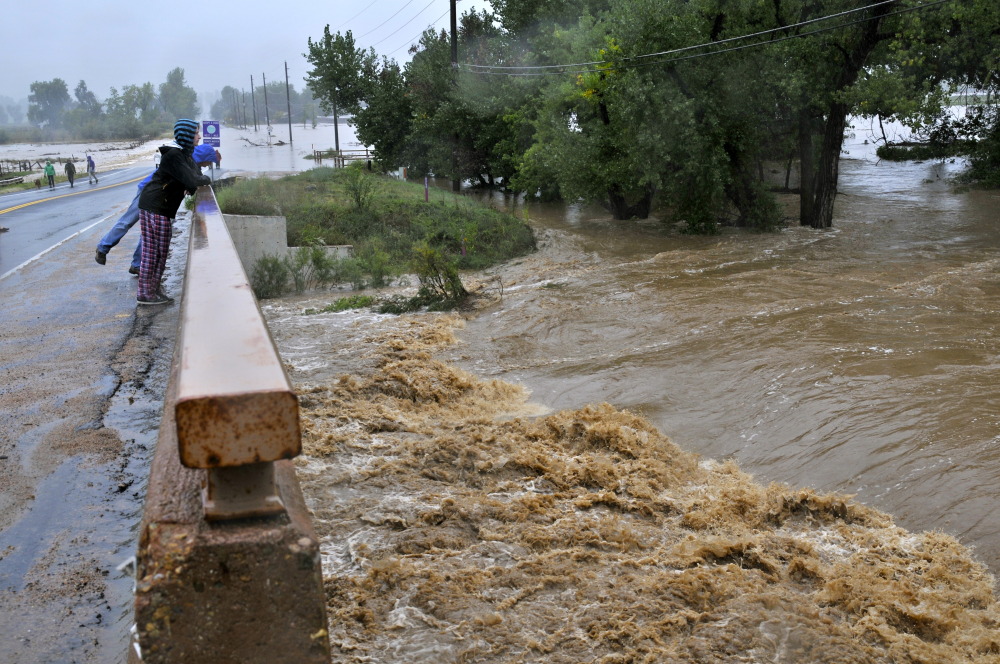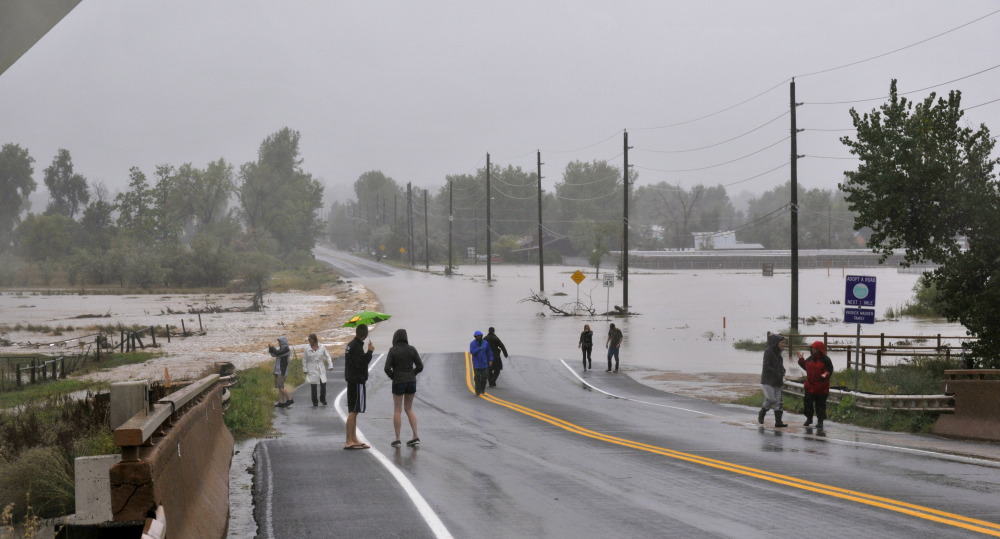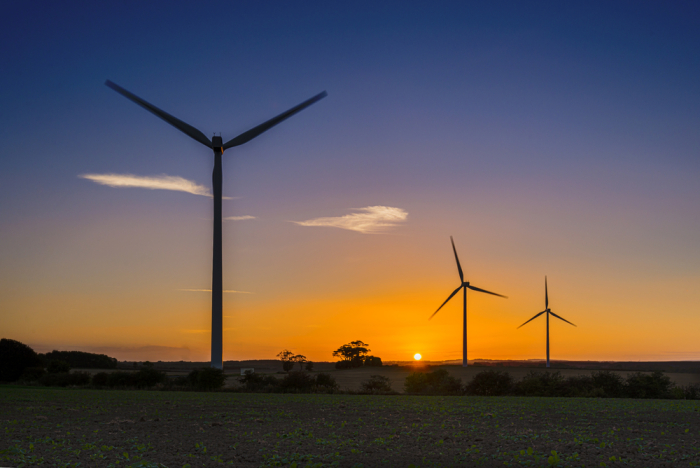
Written by Michael Sobczak
One observer’s experience in the fight for clean air.
It was a rainy day that reminded me of last September when it started to rain and didn’t stop for about five days. And then for only a short break before starting back up.
I walked fast with the hood of my parka drawn tightly over my head. There’s this fearful side of me now that signals in anytime it starts to rain… my mind thinking of the seemingly endless days of rain from a semi-arid Colorado perspective. After it was all over, last September, more than 17 inches of rain had fallen over approximately a 200 square mile area. That’s equivalent to a covering of about 20 feet of snow.

(Credit: Jen Hall-Bowman)

I was on my way to the U.S. EPA’s public hearing in Denver about the new “Clean Power Plan,” originating out of the EPA’s ruling authority under the Clean Air Act to carry out President Obama’s Climate Action Plan. Denver and three other cities (Atlanta, Washington, D.C., and Pittsburgh) hosted the public comment hearings the week of July 28—gathering up comments from across the western region and the country.
I was impressed by the steady stream of people arriving to voice their thoughts about the “Clean Power Plan.” They included local concerned citizens, just common people like 80 to 90 year old Colorado grandmothers, impassioned college kids many wearing teal colored “I Love Clean Air” t-shirts, a long tenured western slope public school teacher, mine workers affiliated with the United Mine Workers of America (UMWA) mostly dressed in matching camouflage green t-shirts with “We are One” on front and “We are Everywhere” on back concerned about losing their jobs, university professors and engineers bringing their concentrated years of knowledge to the forefront, and environmental activists ringing the bellwether warnings of taking action now.
They had two rooms set aside to hear the people’s comments along with overflow rooms with television screens carrying the live comments in front of official U.S. EPA staff panels. Each person had to keep their verbally voiced comments to a five minute maximum. Though they could submit additional written comments and supporting materials to the U.S. EPA.
The old folks and younger ones spoke in sincere words about their concerns.
“We stand at a very deep precipice, our global seasons are changing rapidly and dramatically both physically and metaphorically. We can see the rising tide and the writing on the wall. We can choose to ignore it and continue on as business as usual as some stagnant fear of perceived job loss or quality of life. But that type of linear thinking only results in fatal tragedy and has a resounding co-lateral impact on our future generations.”
~ Colie Kraft, a barista and student of Water Chemistry at Metro-State(Denver).
Mine workers from AZ, CO, MT, ND, UT, WY voiced of working honestly for some 30 to 40 years raising families, many in small western towns where everyone knew each other. They were concerned that the “Clean Power Plan” would hurt their livelihoods, but not really help protect the Environment that much.
Steven Deschaak, a North Dakota miner and UMWA member, said, “I feel the rule as written is misguided. It punishes workers in the United States and does little if anything for the environment. The rule proposes to reduce carbon emissions locally by dismantling the American coal industry. He added, “This rule will not help the environment, but it will throw away my future and cause hardship on many others.”
Environmentally minded folks voiced many concerns of why it’s important to act now to curb carbon releases into the atmosphere.
“A Native American proverb says we do not inherit the planet from our ancestors we borrow it from our children. My dad always taught me when I was a kid if I ever borrowed anything I better return it in better shape than I took it. I hope we do that with our planet.” ~ Rick Blotter, a long time public school teacher.
Some voiced additional supportive comments from all over the country, some voiced detailed numerical tested and retested conclusive results of why this to be the right direction, some didn’t think the plan went nearly as far as it should almost to the extent that the plan might be scrapped because of this. However, most who thought it didn’t go far enough conceded the plan to be a step in the right direction nevertheless.
Dr. Michael Hendryx, School of Public Health at Indiana University, articulately stated, “The rule as proposed is incomplete, and fails in my view for two interrelated reasons. First, it fails to recognize the public health problem created by not only fossil fuel combustion but also the extraction, processing and transportation of fossil fuels. Second, the proposed state specific emission goals provide insufficient weight to the contributions that renewable fuels must make to reducing Climate Change and public health impacts.”. . .
“In conclusion, I applaud the EPA’s efforts to address the problems caused by an over reliance on fossil fuels, I urge the EPA to increase the goals for renewables. I caution the EPA that we simply can not replace coal with natural gas or replace coal burned in dirtier plants with that same coal burned in slightly cleaner plants without considering the Climate Change and public health costs of the full production cycle of these fuels—extraction, processing, transportation, combustion and disposal—not simply the cost of their combustion.”
Where I sat in the public hearing room, I tried to study the details of the plan as I listened to the stream of comment giving people as they continued flowing up to the front of the room—sitting at a table in front of the EPA panel with people on deck just behind them. I remembered crossing the bridge over the Boulder Creek in the early morning September hours just at the point the rain started to ebb. The water ran about a foot from the top of the bridge’s highest underneath point. I had never seen the waters that high before.
What I read said the plan would cut carbon pollution across the United States at existing power plants to 30 percent below 2005 levels by 2030. That seemed like something. I read power plants are the biggest single source of CO2 emission, emitting approximately 40 percent of the CO2 from fossil fuel combustion in the US.
So, doing something like this would only be bound to help cut the high amount of CO2 and other carbon gases in the atmosphere. Coal power plants fall under the rule as well as natural gas, oil and co-generation plants.
The EPA plan is proposing an individual state-by-state approach, the kind that has proved successful in the past. Each state has broad flexibility to meet its assigned targets. Each state would have until the middle of 2016 to devise their own compliance plans based on their own unique energy situations and renewable creating abilities. After approval, states would begin implementation by 2020, reaching their goals by 2030.

Colorado for example would be required to reduce emissions to 1,108 pounds of CO2 per megawatt hour of electricity generated. EPA 2012 data shows Colorado emitted 1,714 pounds of CO2 per megawatt hour generated. This means their emissions would need to be reduced by 606 pounds per megawatt hour by 2030 to meet the plan’s requirements.
I walked back outside to take a break across the street at the Tattered Cover – Lodo, one of Colorado’s best book stores. I noticed clipboard holding canvassers hiding under the protection of the EPA’s LEED-certified building waiting for people entering and exiting the building to get their signatures. The rain kept falling as I tucked my carrying case with information about the “Clean Power Plan” and my laptop computer close to my body and under my arm as much as possible.
I continued to reminisce about last September’s rain and subsequent flooding—how the rains and raging waters had been referred as a 100 to 500 to even, by the National Weather Service (NWS), a 1000 year flood flood event—the NWS calling it biblical in proportion. I remember somewhere in my childhood of hearing that the supreme being had promised not to send another rain as big as had been sent way back when.
Maybe we can all gain from this new “Clean Power Plan” as we let our voices be heard, be us concerned environmentalists, overall caring Colorado grandmothers or livelihood protecting mine workers. Wouldn’t it be nice no matter who we are if we all could do something positive to help stop the adverse effects of climate change and the extreme weather that seems to have our own human fingerprints on it. I pray whoever is responsible out there somewhere doesn’t change their mind about the biggest of rains. And I hope that rain of last September doesn’t get any bigger.
Take action.
You still have time to submit a written comment. Written comments are to be collected through December 1, 2014.
U.S. EPA originally was accepting comments on the Clean Power Plan for 120 days after publication in the Federal Register, until October 16. They have now extended the period another 45 days until December 1st. The final rule officially makes it out in 2015—about one year from now.
Take action!
To submit your own personalized written comments and to get more information about the proposed rule, click here. You can also take action through Moms Clean Air Force.
 Michael Sobczak is a writer living in Boulder, CO at the base of the Rocky Mountains with a strong interest in environmental issues both locally and those surrounding us.
Michael Sobczak is a writer living in Boulder, CO at the base of the Rocky Mountains with a strong interest in environmental issues both locally and those surrounding us.
Bonus:
Listen to this Green Divas myEARTH360 Report podcast about WTF is with these Coal Rollers…
[dynamic-sidebar id=’Custom Widget 2′]
Asst. Ed. ~Green Diva Christine